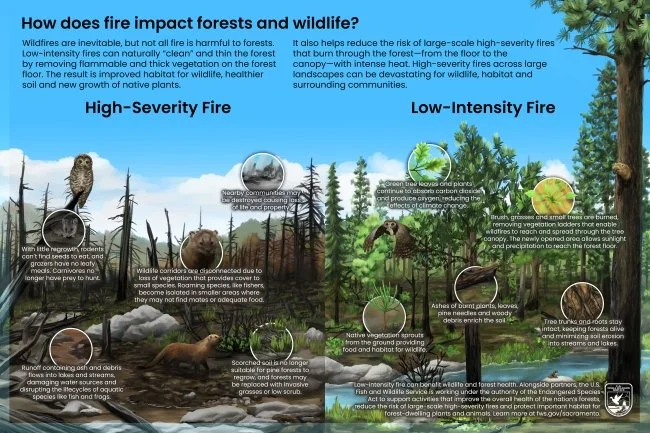Storytelling: Writing for your audience
Effective storytelling has a lot of components, including identifying your core audience and writing an article that addresses their questions. As the U.S. Fish and Wildlife Service’s Public Affairs lead for the Sierra, I received numerous media inquiries throughout the summer and fall asking about impacts of California’s megafires on wildlife. At that time, the Service didn’t have ready-made content on this topic for reporters, which made responding to requests under tight deadlines challenging. As part of our annual editorial calendar development, I set out a timeline for creating content that would address this need.
Stories aren’t typically designed with media as a target audience. The media is your conduit to relay information to your target audience. But in this instance, I wanted to create a compelling story that 1) answered the questions I most commonly received from reporters on the impacts of wildfire on wildlife, 2) included evergreen quotes from experts that could be pulled into new articles and 3) provided accurate information for reporters on tight deadlines.
I spent time reviewing various listing decisions that cited wildfire as a contributor to species decline. I researched information from other federal and state agencies on fire behavior, the types of fire that could impact the landscape, and the impacts of wildfire on habitat and wildlife. I interviewed numerous partners and subject matter experts for the story, including representatives from the Fish and Wildlife Service, U.S. Forest Service and CalFire. With all of this information in hand, I created a set of messages and proof points that were woven together with imagery and on-the-ground examples to develop the story.
But I knew the information could be used for additional purposes. I worked with my communications team to create an infographic that simplified the information in the article. The artwork showed the impacts of fire to wildlife in streams, on land and in the tree canopy. The infographic also included the key messages to build message resonance across products.
High-severity and low-intensity fires have very different impacts on wildlife.
I published the story, "How Does Wildfire Impact Wildlife and Forests?" on the USFWS website in October 2022 in alignment with Fire Prevention Month. We featured the article in two separate social media posts; the first featuring photos from the article and the second featuring the infographic image. I shared links to the social media posts and the article with agencies and organizations that address wildfire topics in their work.
In the first week, the story had more than 1,000 views (the site average being a couple hundred). Multiple partners amplified the content by sharing our social media posts or including the story in their newsletters. Views remained steady over the years, with peaks when major fires erupted in the state showing that the content was findable and aligned with search engine inquiries. And as media inquiries came in, I had a well-researched article and infographic that I could send to them for reference, as well as key messages our experts could use during interviews. Excerpts from the story continue to be used by media outlets. In fact, I saw quotes from the story used in a Newsweek article written in response to the January 2025 fires in Southern California.
Content developed with a purpose in mind is going to result in better connections with your audience and greater potential for amplification.
Do you need stories developed to highlight your organization’s good work? We can help! Contact us.

